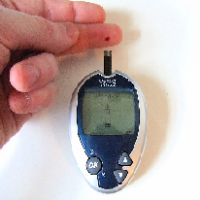
When I was released from the hospital with CHF, I was given instructions to avoid a future hospitalization. Of course, there were fluid and sodium restrictions; it was suggested I assuage thirst with gum or mints. I was given a scale and told to weigh myself daily; in the event of a gain overnight, my Lasix dose might need adjustment.
As such, when I began my fast, my electrolyte drink only contained potassium, not sodium. And I had a bad habit of eating mints instead of drinking when I was thirsty. As I explained in my electrolytes post, fasting causes a significant loss of sodium and water via lowering insulin.
During my fast, I’d gotten off carvedilol and lisinopril entirely and cut my lasix dose to 1/4 by increments as my BP dropped. I’d lost 13 pounds during my fast and believed that to be nearly entirely water. My feet and legs looked normal; I wasn’t even using the lymphapress anymore. I was in my older bras, with a 2 inch shorter band then when I began.
But here’s the problem with avoiding sodium and training yourself to eat mints instead of drinking when thirsty: it’s very easy to become dehydrated when insulin goes down.
About 8 days after my fast, I felt dizzy and lightheaded. Neither my BP nor my bG were particularly low. When I got up to go into the kitchen, I felt nauseous and decided to eat some salt. As I reheated meat for my salad, I thought I’d hit the john since it had been several hours; almost nothing came out.
When I realized I’d dehydrated myself, I threw the mints out. I drank 24 oz water before dinner and 32 oz afterwards. And immediately, sodium was added to my daily electrolyte drink.
Electrolytes are crucial when fasting. And so is water.
But if you think there’s some minimal amount of water you need, check out Dr. Berry’s take on this:
Just drink to thirst and don’t kill your thirst with mints or gum!
And now on to the BEST ever NSV, walking with kitties!




